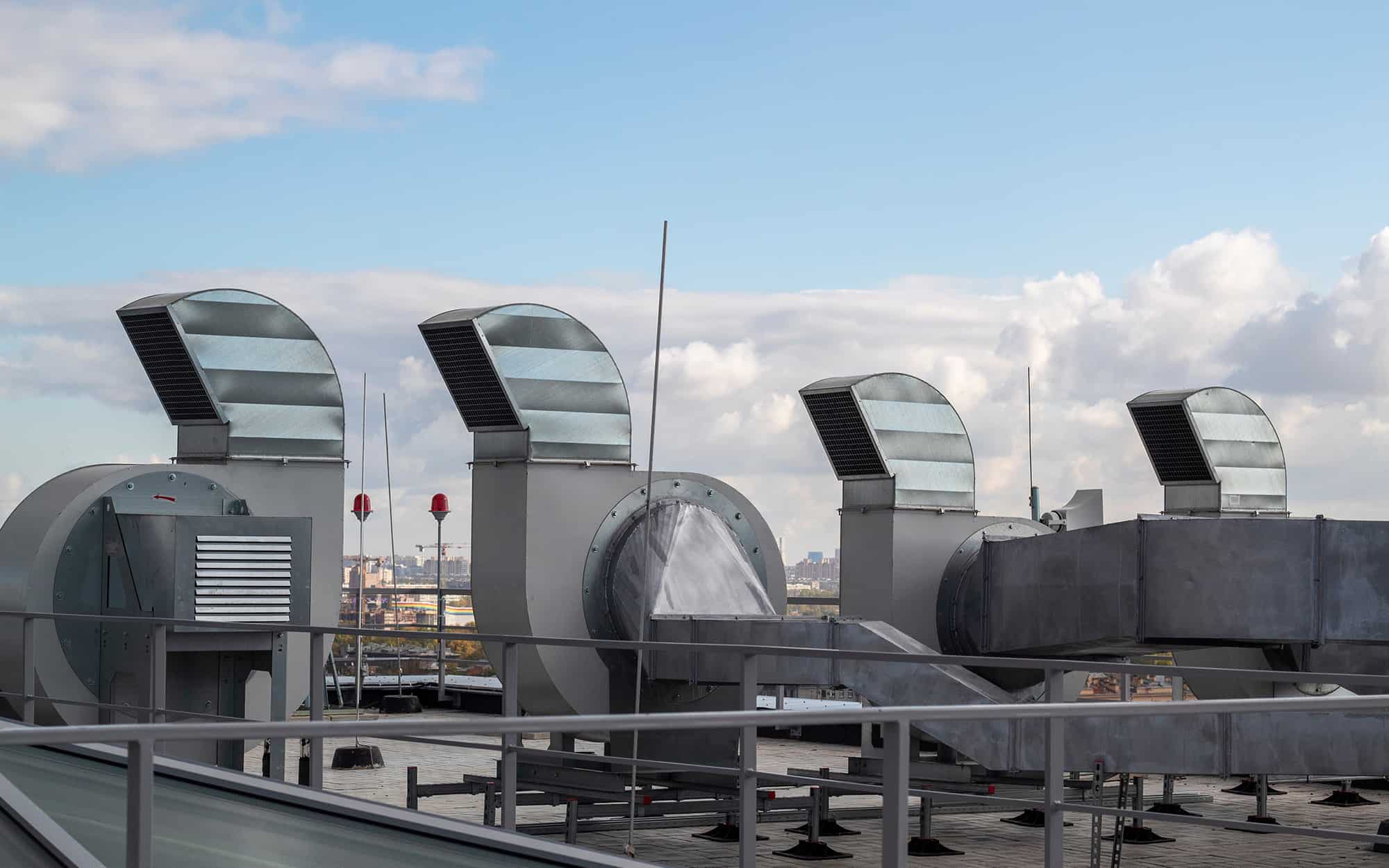
If you’ve ever looked up in the middle of a city or suburban business district, you may have noticed those large, box-like structures sitting on top of the buildings. Those are HVAC systems, the unsung heroes of indoor comfort responsible for heating, ventilating, and air conditioning—hence the acronym HVAC.
Now you might be wondering: Why are AC units on the roof top unit? At first, it probably seems a bit odd, especially since residential HVAC units are usually tucked away on the sides of homes or hidden in basements or attics. However, there’s a method to this perceived madness, and it’s not just about freeing up space on the ground.
In this article, we’ll dive into why building owners put their HVACs on the roof and why roof top units are preferred. We’ll explore the benefits and answer your questions.
Reason #1: Space Utilization
In the real estate world, the saying goes, “Location, location, location.” In the realm of commercial HVAC systems, we might amend that to “Space, space, space.” Commercial buildings, particularly in urban environments, are often limited in terms of ground and interior space. Every square foot that can be used for productive purposes, such as offices, retail, or storage, translates into better utility and greater revenue.
This is where roof top units come into play. By placing HVAC on the roof, you free up valuable space. For instance, a commercial RTU that would occupy a sizable portion of the ground floor or basement can instead be placed out of the way on the roof, making room for additional office space or storage.
Reason #2: Noise Control
If you’ve ever been close to a commercial RTU, you know they aren’t exactly the quietest. The constant hum and occasional clanking sounds can become a significant distraction in a work environment, leading to decreased productivity and employee satisfaction.
When an HVAC system comes in the form of roof top units, the majority of the noise stays outside the main workspace. This strategic placement allows a quieter environment inside the building, which can be especially beneficial in settings where noise control is critical, such as in offices, schools, or hospitals.
Reason #3: Ease of Maintenance
Maintenance is a vital aspect of any mechanical system, and HVAC units are no exception. Regular checks and repairs ensure the longevity of the system and prevent sudden breakdowns. If a large HVAC system inside a building needs a major repair, the process could be disruptive for the day-to-day operation of the business.
By placing HVAC systems on the roof, maintenance and repair work can be performed with minimal disruption to occupants. Technicians can also access the system directly from the roof without having to navigate the building’s interior.
Reason #4: HVAC Efficiency and Performance
One of the important elements of an HVAC system’s performance is the outdoor temperature. The systems work on the principle of heat transfer, moving heat from one area (inside) to another (outside) to maintain a comfortable indoor climate. As such, the outdoor conditions can significantly impact the efficiency of this process.
Roof top placement often provides an advantage in this respect. Roofs typically have more exposure to airflow than ground-level locations, which can help the HVAC system dissipate heat more effectively for cooling. Also, being away from ground-level heat sources (like vehicles or other machinery) can improve efficiency.
By placing these systems on the roof, overall performance and energy efficiency of the HVAC system is boosted, ultimately saving on utility costs.
Reason #5: Security and Vandalism
HVAC systems can be extremely costly to install and replace, making them potential targets for theft or vandalism. Copper components are often attractive to thieves due to their resale value. Placing these systems on the ground floor could make them easily accessible to criminals.
By installing HVAC systems on the roof, businesses add an extra layer of security to these valuable assets. The height and difficulty of access are deterrents, reducing the risk of unauthorized access, theft, or damage. In this way, roof placement can provide peace of mind and potentially reduce insurance costs.
Reason #6: Aesthetics
While the primary function of an HVAC system is to maintain a comfortable indoor climate, the visual impact of these systems is worth considering. Large HVAC units can be somewhat of an eyesore when they’re placed at the ground level.
Relocating these systems to the roof can greatly improve a building’s curb appeal. This might not seem like a big deal, but for businesses where first impressions matter, such as hotels, retail stores, and office buildings, aesthetics can make a significant difference. And let’s not forget about the potential impact on property values. A building with a clean, uncluttered appearance can command higher rents or resale value, contributing to the bottom line.
How Can We Help?
As we’ve explored in this article, there are a variety of reasons to put your HVAC on the roof. But placement is just one consideration. Equally vital is the ongoing maintenance and care to ensure efficient operation.
At REACT Industries, we understand that building owners have a significant responsibility to protect the health and well-being of their occupants. One of the primary ways to achieve this is by maintaining a well-functioning HVAC system.
Whether you need routine maintenance or are facing an HVAC emergency, don’t hesitate to reach out to our team. As an essential service provider, we’re committed to keeping your HVAC systems operating efficiently, ensuring a safe and comfortable environment for everyone in your building.
Contact us today to take a proactive approach to your building’s HVAC needs. Remember, when it comes to HVAC health, it’s better to REACT than to wait!